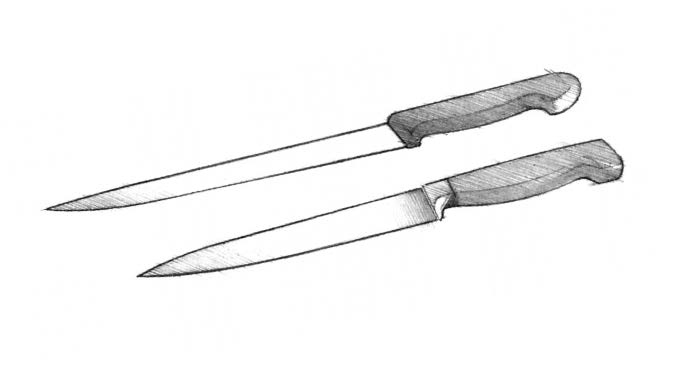Slicer
The slicer has one function: to slice the meat or fish in one slicing motion. There is no back-and-forth motion needed for a slicer. The knife is very long, usually 12 inches, although shorter ones are available. It’s most often seen in slicing the white (breast) meat off turkey, or carving thin slices off large cuts of beef.
Most slicers are used by food service professionals, as most people rarely have the volume of food that would necessitate a slicer. The slicing knife’s blade is very thin and flexible, which allows for very thin slices. This is most visible in New York delicatessens serving beef brisket or corned beef, or sliced-toorder smoked salmon. It’s been said that some longtime workers in New York delis can slice smoked salmon so thin that you could read a newspaper through it. That comes from years of practice, and a very sharp slicer.
Some slicing knives have rounded tips. These are seen mostly in restaurants that have carving stations. The rounded tip is a safety measure, to prevent customers from being jabbed when they, or the chef, lean too far forward to place the food on the plate with the knife under the food.









